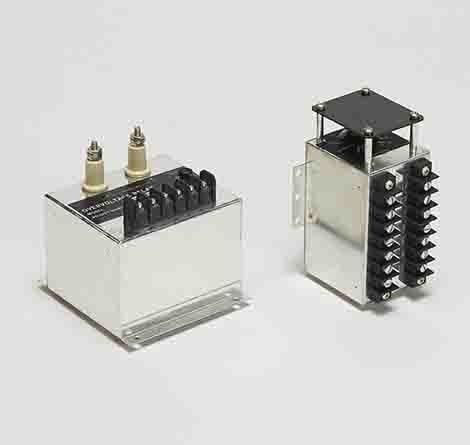
Protective Relays: Trips faulty circuit breakers
A protective relay is a compact and self-contained switchgear that trips a circuit breaker when a fault is detected for conditions such as overcurrent, overvoltage, over- and under-frequency, and reverse power flow. Sometimes known as monitoring relays, protective relays have two functions: switching (trip) and measuring (the monitored value that leads to a trip). Most protective relays are electromechanical, which work by electromagnetic attraction and induction. Protective relays are most commonly used in electric power systems. Overcurrent Relays are a subcategory of protective relays. Our portfolio of protective relays is manufactured under the Wilmar product family.
Protective relays provide the presence, type, and/or location of a fault. For example, once a fault is detected, the relay closes the trip circuit of the breaker which results in the opening of the breaker and disconnection of the faulty circuit. This minimizes damage to equipment and decreases service disruption to the rest of the system. When a short circuit occurs, the current flowing in the transmission line increases to an enormous value. This results in a heavy current flow through the relay coil that causes the relay to close its contact, which in turn closes the breaker trip circuit and makes the circuit breaker open and isolates the faulty section from the rest of the operating system. This isolation contributes to the safety of the circuit equipment from getting damaged and normal operation of the rest of the system can continue.
Our KILOVAC WD series offers several models of protective relays in a common package that is suitable for either DIN rail or screw mounting. These flexible, multifunction devices offer user selectable voltages, sense currents and frequencies. Adjustable time delays are standard. This allows a single part number to be suitable for multiple applications, thereby reducing inventory costs.
Featured Overcurrent Relay
KILOVAC AC current sensing relays
WD5051 AC current sensing relays provide current monitoring and protection in AC systems from 50 to 400 Hz. Nominal sensing current, instantaneous over current setpoint, time over current setpoint, and time over current time delay are user configured. Our KILOVAC WD5051 current relays operate when the externally adjustable trip point is reached. An external time over current time delay control is provided with an adjustment of 0.5 to 20 seconds. This time delay may be used to prevent false tripping when there are slight variations in the sensed current. With control power applied, the instantaneous over current (IOC) contacts pickup when the input signal exceeds the IOC trip setpoint. Similarly, with control power applied, the time over current (TOC) contacts pick-up after the preset time delay when the sense current rises above the TOC trip setpoint. The IOC contacts may also be configured to function as an undercurrent relay. A green LED indicates power to the relay. Red LED lights indicate the state of the IOC and TOC trips.

